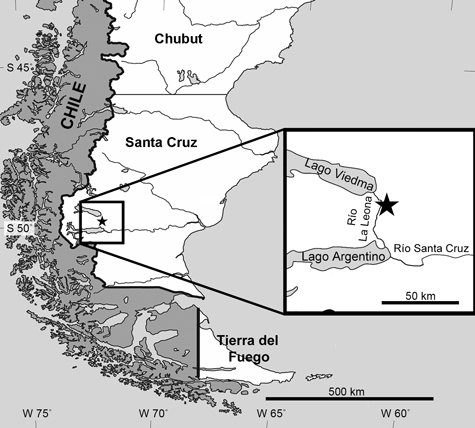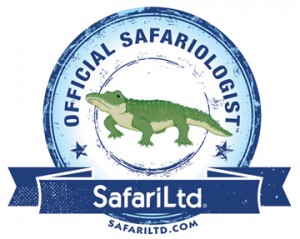A Little Detail on a Great Big Dinosaur – Dreadnoughtus
Dreadnoughtus schrani – A Dinosaur on a Massive Scale
And so the announcement came this week about the discovery of a super-sized, South American dinosaur that weighed as much as thirteen, bull African elephants. Dreadnoughtus was so named as the huge bones (and for a change when it comes to the Titanosauria, there are quite a lot of them), reminded the scientists of the impervious super-structure of turn-of-the-century battleships. This was a plant-eating dinosaur that was simply too big to be vulnerable to attack from predators. Invulnerability would have been very handy for this immense creature as this dinosaur would have been preoccupied with eating, trying to cram enough calories into its enormous digestive system to keep its house-sized body functioning.
A Dinosaur on a Massive Scale – Dreadnoughtus schrani
Picture credit: Jennifer Hall
Dreadnoughtus schrani
Many articles have already been written about this new titanosaur, the scientific paper was published by the Nature Publishing Group on the 4th September, this paper has already received more than 20,000 page views and the story has been picked up by dozens of news outlets. We at Everything Dinosaur, had known about this research for some time, there are more exciting titanosaurid discoveries from South America still to be announced, so this blog article hopes to recap the main points about the significance of this study and to focus on a couple of areas that may not have been covered by other media outlets.
The “Elephant in the Room”
Firstly let’s deal with the size – this is a real “elephant in the room” moment, as with all large dinosaur fossils, this seems to be the most prominent and frequently asked question – just how big was this dinosaur?
The Size and Scale of the Dinosaur Discovery
Picture credit: Dr Ken Lacovara
Although D. schrani may not be the very biggest of all the dinosaurs that ever existed. It is certainly right up there, with an estimated body mass of 59,300 kilogrammes (the actual measurement was 59,291 kilogrammes but some rounding has taken place in the media).
How Do Scientists Estimate the Body Mass?
This leads us to one the most important points to note about this discovery. The international research team led by Drexel University’s Dr Kenneth Lacovara was able to recover around 45% of the total skeleton of a single individual specimen, including cranial material (skull bones). Most of the rear portion of the animal was excavated including a left humerus (upper arm bone) and femur (thigh bone). These limb bones hold the key to estimating body size. Earlier studies have shown that an analysis of the these limb bones and measurements of their circumference, corresponds to relative body mass in terrestrial quadrupeds.
Put simply, imagine weighing several different herds of cows before they are slaughtered for meat. The cows would be of different sizes and therefore there would be some variance in total body weights. Once the cows had met their demise, the upper arm bones and thigh bones could be collected for each animal. The mid shaft circumference for these bones would then be measured and recorded. A correlation would most likely be found between the mid shaft circumference measurements and the body weight recorded earlier. For instance, bigger circumference equals a heavier animal.
This correlation provides accurate data on the body mass estimates of four-limbed, terrestrial animals that are alive today. So the theory goes, that if it works for animals that are extant (living today), then it should also work for extinct animals such as the Dinosauria. This correlation is extremely useful as the sauropods and the later titanosaurs are so different from living creatures that anatomical comparisons are just not relevant.
The preservation of these limb bones which have been found to scale with body mass, permits the scientists to make an estimate of the body mass of Dreadnoughtus schrani. The same equation has been used to estimate the body masses of a number of other substantial dinosaurs, but none of them quite match the bulk of Dreadnoughtus. It therefore suggests that the Dreadnoughtus schrani holotype material represents an individual titanosaurid that was much heavier than other titanosaurs and indeed much more massive than most other sauropods.
Dreadnoughtus Compared to Other Sauropoda (Limb Circumference Analysis)
Table credit: Everything Dinosaur, data compiled from Nature Publishing Group and Benson et al.
Still Growing?
Astonishingly, of the two specimens found together, the largest one, the Dreadnoughtus that was estimated to be heavier than a Boeing 737 aircraft was probably not yet fully grown. Identifying when a dinosaur reached its maximum size is a complicated business (related to indeterminate growth), however, the research team found that it was likely that this super-sized dinosaur was still growing at the time of its death. The scapula (shoulder blade) had not fused completely to the coracoid bone.
The posteromedial margin of the coracoid foramen (small opening, located in the middle of the coracoid), was butted up against the distal portion of the shoulder blade. Palaeontologists have cited these conditions as indicating that the individual was still growing. A study of the humerus supports this hypothesis, the lack of lines of arrested growth indicate that this dinosaur was immature at the time of death. Although some scientists have questioned the validity of these indicators, whatever the outcome, the larger individual of the two Dreadnoughtus specimens found to date, represents the biggest dinosaur known to science for which a robust body mass has been calculated.
Not reported by many media sources but for the record the femur length is in excess of 1.9 metres and the humerus is 1.6 metres long.
Dinosaur Fossils Found in Southern Patagonia
Another, significant point we wanted to make concerns the location of the dinosaur fossils. Whilst Patagonia may now be synonymous with dinosaur discoveries, Argentinosaurus, Giganotosaurus et al, many of these fossils come form the northern and central parts of this vast region. These fossils come from a relatively unexplored part of south-western Patagonia. The fossil material was excavated from the Cerro Fortaleza Formation, an exposure on the eastern bank of the Río La Leona, (Santa Cruz Province), this is more than 750 miles (1,200 kilometres) away from the location of other major Cretaceous-aged dinosaur fossil finds.
We at Everything Dinosaur are unaware of any radiometric dating and although Campanian-aged biostratigraphical material is associated with some horizons of the Cerro Fortaleza Formation, the precise age of these fossils remains unclear. They are between 83 million and 66 million years old, with some sources stating 77 million years of age (Campanian to Maastrichtian faunal stages).
Location of the Dreadnoughtus Quarry
Picture credit: Map de la provincia de Santa Cruz
A Team Effort
Last but not least, the 116 fossils, some of which do show potential evidence of scavenging by theropod dinosaurs, have been excavated, prepared and digitally mapped by a dedicated team of researchers. This has certainly been a colossal undertaking, yes, we know the tail itself measures some thirty feet in length, (the total length of Dreadnoughtus schrani has been estimated at 26 metres) and the skull (only one fragment of which has been found) was around eighty-eight centimetres in length. It is quite right to focus on the huge size of this member of the titanosaur family, but we at Everything Dinosaur would like to take this opportunity to thank all the researchers for their hard work.
The first fossil was spotted during a expedition back in 2005, the femur we think. From 2005 to 2009 a series of field trips took place to excavate the two individual specimens, since then a great deal of preparatory work and fossil prep has been carried out by scientists from Drexel University, a number of graduates from this institution but also with the aid and support of the likes of the Carnegie Museum of Natural History, the Museo Argentino de Ciencias Naturales, Argentina and Laboratorio de Paleovertebrados, Universidad Nacional de la Patagonia (also Argentina).
Even a scientist from the University of Manchester (Dr Victoria Egerton), a lecturer in Applied Palaeontology, was involved. Our congratulations to everyone who has participated in this amazing study, an exceedingly rare opportunity to learn about one of the largest terrestrial vertebrates that is known to science.
For models and replicas of titanosaurs and other prehistoric animals: CollectA Deluxe Prehistoric Animal Models and Figures.






